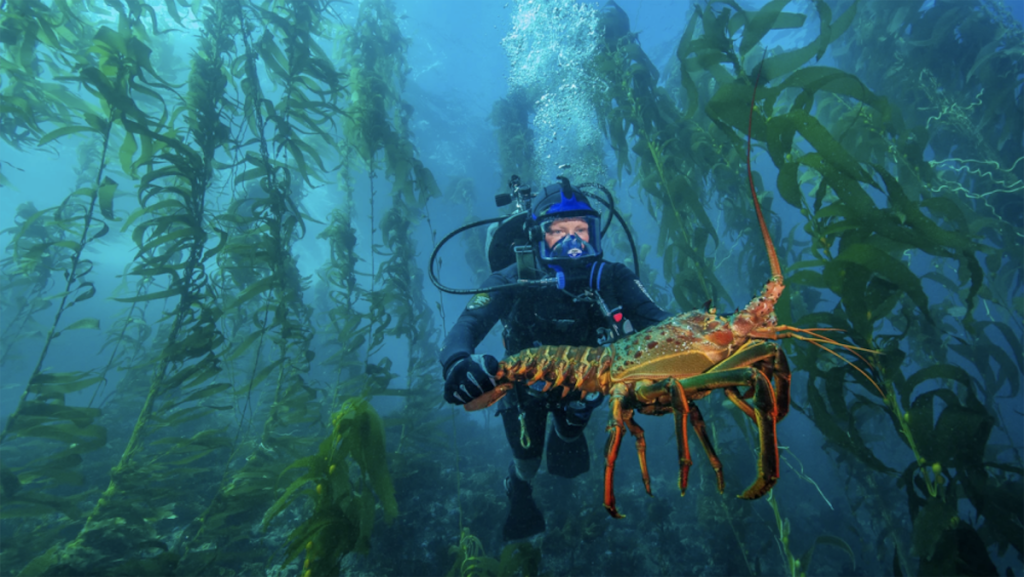Santa Barbara’s Marine Protected Areas (MPAs), or state-sanctioned ocean conservation zones, are now subject to change — whether it’s stripping protections or expanding them.
Last year, thanks to an “adaptive management process,” the public submitted 20 petitions to either (1) decrease or eliminate MPAs, (2) decrease some protections while enhancing others, or (3) improve or add new MPAs.
Spurred by the state’s 10-year management review of its MPA network, the petitions could result in up to 80 regulation changes.
And for Sandy Aylesworth of the Natural Resources Defense Council, they represent an “exciting opportunity to safeguard our waters,” she said during a November 13 webinar on the topic.
The state’s dedication to marine conservation, Aylesworth added, is “incredibly important in the context of the incoming Trump administration, which will likely seek to weaken federal protections” for ocean waters.
A storymap recently released by the Defense Council and other petitioning nonprofits explains the changes being suggested for these underwater fish refuges.
Around Santa Barbara County and the Channel Islands, there are 11 petitions to expand or improve MPAs. On the flip side, there are nine that seek to eliminate or reduce them.
One of those petitions, for example, was submitted by the Environmental Defense Center to reclassify the Anacapa Island State Marine Conservation Area (SMCA) as a State Marine Reserve, aiming to enhance protections for eelgrass habitat — 90 percent of which has vanished from state waters.
In the same area, the California Sea Urchin Commission is proposing to allow for the commercial take of urchins within the SMCA, thereby reducing some protections.
While most conservationists are on board with expanding MPAs — hoping to reach California’s goal of conserving 30 percent of state lands and waters by 2030 — most commercial fishermen are not. Many want marine species to thrive, but fear more limiting regulations in an already highly regulated industry.
Chris Voss, president of the Commercial Fisherman of Santa Barbara, said it feels like fishermen are “indefinitely fighting petitions to close the areas we fish in — we’re being pushed to fish in smaller and smaller areas.”
But the bureaucratic hoops these petitions must jump through are complicated, to say the least.
The Department of Fish and Wildlife spent the last year reviewing the petitions, establishing a three-phase petition evaluation process, and organizing them into two “bins” — “bin one,” or short-term, petitions (clearing up minor regulatory or compliance issues), and “bin two,” or long-term, petitions (major, controversial changes).
Five short-term petitions may be enacted in the near future, but the bulk are long term. Those are being kicked down the road for the state to figure out later.
In December, the California Fish and Game Commission will hear staff recommendations and comments on the petitions, consider granting or denying petitions in bin one, and plan next steps for bin two.
“I think the bin one petitions will probably move forward with the recommendations from staff, but bin two, they’re hoping to do a more in-depth review process, which is a lot of work,” explained Penny Owens with Santa Barbara Channelkeeper. “All of the ones in the Santa Barbara Channel are in bin two.”
Environmental organizations were initially a “little caught off guard that it was up to the public” and nonprofit organizations “to evaluate the health of the network and figure out what is working,” said Laura Deehan, director of Environment California during the November 13 webinar.
However, she said, now is a key time for the public to understand the petitions. Organizations have until the end of the year to solicit feedback, and must submit any petition changes by January to the California Fish and Game Commission, Deehan said.
Learn more about the petitions, the process, and how to be involved through the California Department of Fish and Wildlife here or through the environmental organizations’ storymap here.
Premier Events
Sun, Jan 05
6:00 PM
Santa Barbara
Contra Dance💃 With Fiddle Tunas Band
Sun, Jan 05
7:00 PM
Santa Barbara
POSTPONED – Jazz at the Lobero: Robert Glasper – POSTPONED
Sun, Jan 05
7:00 PM
Santa Barbara
Taylor-Made Tapestry – A Tribute to Carole King & James Taylor
Mon, Jan 06
7:30 PM
Santa Barbara
The Ancient Art of the Maya Forest Garden
Wed, Jan 08
7:30 PM
Santa Barbara
Broadway In Santa Barbara Presents “Mean Girls”
Thu, Jan 09
5:30 PM
Santa Barbara
Blueprints of Tomorrow: A Vision Board Party
Thu, Jan 09
6:00 PM
Montecito
Raising Our Light – 1/9 Debris Flow Remembrance
Thu, Jan 09
6:00 PM
Santa Barbara
DIY Journal Workshop
Sat, Jan 11
3:00 PM
SANTA BARBARA
Santa Barbara Music Club Free Concert Jan 11, 2025
Sat, Jan 11
6:00 PM
Ojai
An Evening of Cello and Poetry
Sun, Jan 05 6:00 PM
Santa Barbara
Contra Dance💃 With Fiddle Tunas Band
Sun, Jan 05 7:00 PM
Santa Barbara
POSTPONED – Jazz at the Lobero: Robert Glasper – POSTPONED
Sun, Jan 05 7:00 PM
Santa Barbara
Taylor-Made Tapestry – A Tribute to Carole King & James Taylor
Mon, Jan 06 7:30 PM
Santa Barbara
The Ancient Art of the Maya Forest Garden
Wed, Jan 08 7:30 PM
Santa Barbara
Broadway In Santa Barbara Presents “Mean Girls”
Thu, Jan 09 5:30 PM
Santa Barbara
Blueprints of Tomorrow: A Vision Board Party
Thu, Jan 09 6:00 PM
Montecito
Raising Our Light – 1/9 Debris Flow Remembrance
Thu, Jan 09 6:00 PM
Santa Barbara
DIY Journal Workshop
Sat, Jan 11 3:00 PM
SANTA BARBARA
Santa Barbara Music Club Free Concert Jan 11, 2025
Sat, Jan 11 6:00 PM
Ojai

